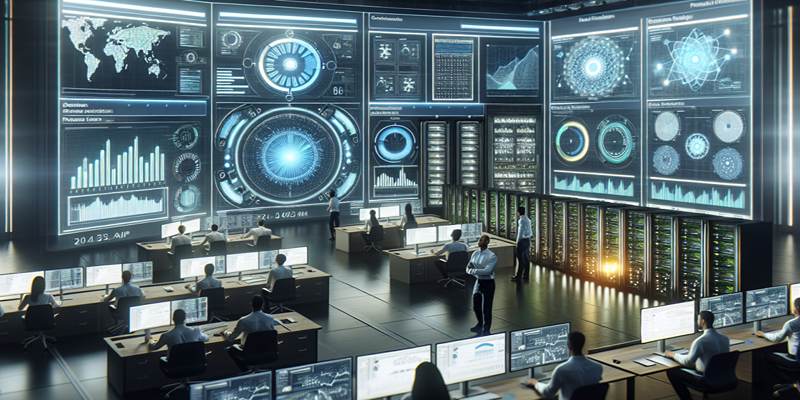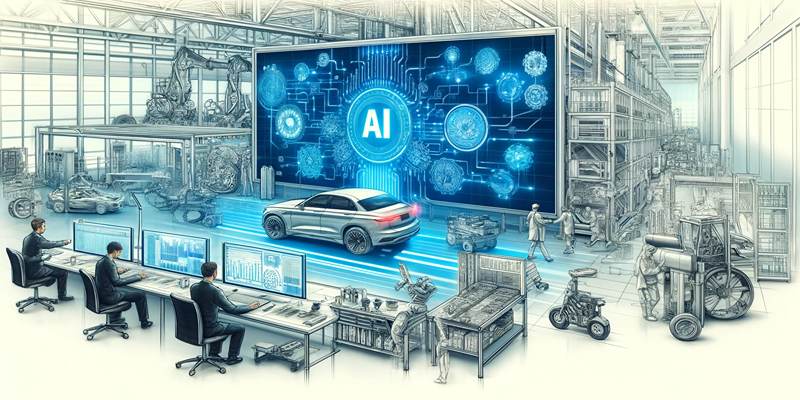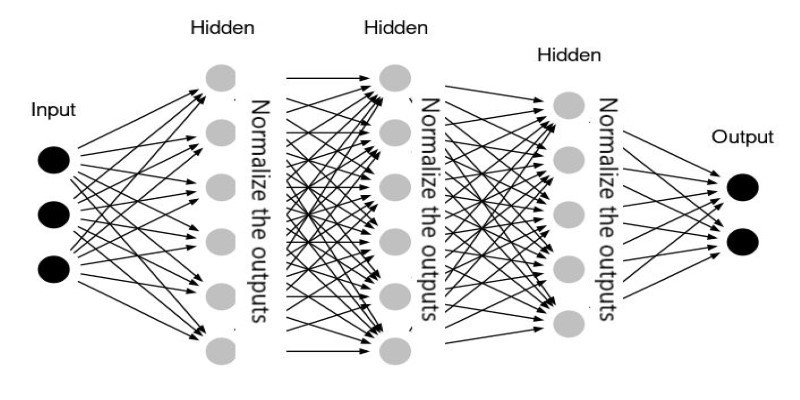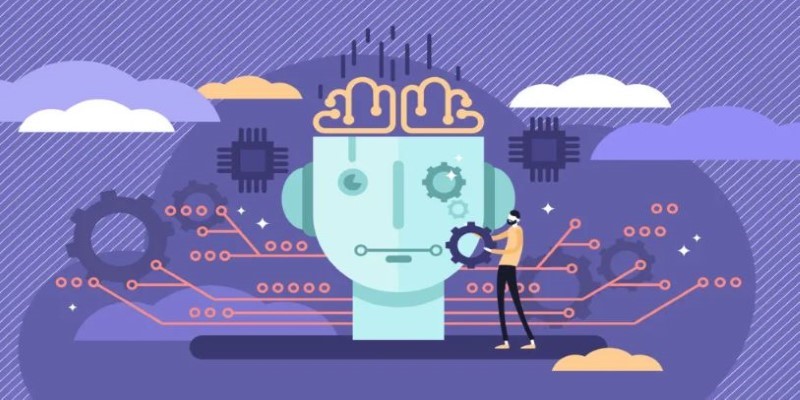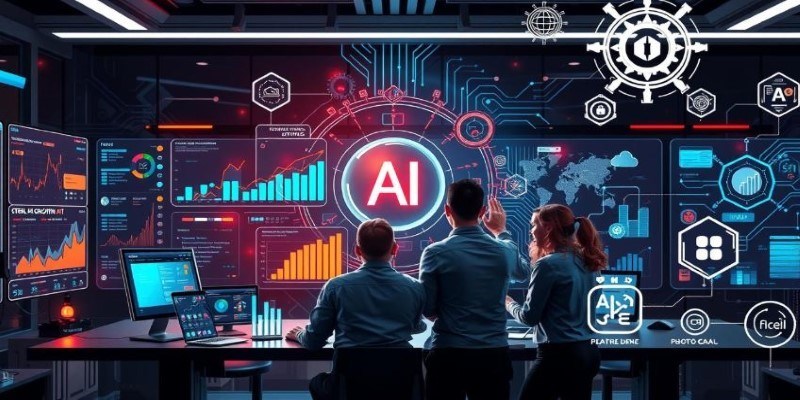With the increasing global climate change issues, climate change and AI act as an effective weapon. Climate change is one of the biggest challenges that can be augmented through the help of artificial intelligence for climate predictions, renewable energy, and minimized carbon emissions. Hence, through sustainable AI, researchers and industries are currently shifting to the development of AI models that have efficiency in technological development and impacts on the environment. Further, the AI applications in the environmental sector are used to support the preservation of endangered species and species’ products, efficient utilization of the resources, and disaster management. If AI is applied in the right ways, then it could help in developing a better and more sustainable environment in the face of adverse effects of climate change. This article focuses on the use of AI in the efforts to fight for a sustainable environment.

The Role of AI in Addressing Climate Change
How AI Enhances Climate Predictions
Climate modeling and forecasting is not an area that can be considered unaffected by the impact of AI. The basic or conventional climate models use records, analysis, and computations, whereas AI improves the existing models by analyzing large amounts of real-time data coming from satellites, sensors, weather stations, and so on. Machine learning can help in identifying patterns of climate change, forecasting natural calamities, and aiding the policymakers to formulate effective climate action plans. Climate predictions with the help of AI can help the government and large organizations to predict the disasters and provide the resources required for mitigating the effects of climate change and implementing the proper policies as well. This is particularly important in order to reduce the effects of climate change before the results get worse.
AI Climate Change Solutions for Reducing Emissions
Today, AI is already being employed in the management of emissions of greenhouse gases in industries through monitoring and control. For example, in manufacturing, the use of artificial intelligent sensors and automation can identify the areas of inefficiency and energy waste and take necessary actions. Also, the models in transportation enabled by artificial intelligence lead to better fuel efficiency through route mapping and predicting the maintenance time. AI is also used in the business sector to manage the energy grid, thus making the distribution of energy more sustainable.
AI’s Role in Disaster Management and Response
Machine learning technologies are transforming disaster management since they offer a chance to predict the outcome and act in real-time. AI-based drones can help in the evaluation of the damage, search and identify the affected persons, and coordinate the relief operations effectively. Also, it uses the planning of evacuation routes and distribution of resources in case of a disaster by using AI-powered simulations. Such advancements do not only have a positive impact on the protection of human lives but also help to prevent or minimize the financial losses resulting from climate disasters.
Sustainable AI: Balancing Innovation with Environmental Impact
Energy-Efficient AI Models for Sustainability
As much as AI helps in solving the environment, it is also a consumer of power. Currently, training the AI models involves the use of massive computing power, hence high electricity consumption and carbon footprint. To this effect, researchers are designing new models that are less resource-intensive in terms of energy consumption. Low-energy neural networks and optimized algorithms are two of the solutions that contribute to minimizing the ecological impact of AI.
Reducing AI’s Carbon Footprint Through Green Computing
Such measures as green computing are crucial in minimizing the impact of AI on the environment. AI relies on data centers, which are among the largest sources of carbon emissions. Some organizations are now seeking to use green energy like solar and wind energy for powering the AI systems. AI is also being used to enhance the efficiency in these data centers through forecasting of cooling requirements, workload distribution, and energy consumption. Also, edge computing that deals with data analysis closer to the source rather than centralized data centers minimizes energy consumption.

Ethical Considerations in AI for Climate Change
It is crucial to also consider issues of transparency, accountability, and representation as AI becomes more of a fixture in climate solutions. Any AI models that are to be developed must be made fair and should not be prejudiced in such a way that it will adversely affect vulnerable groups. Thus, it is crucial to build AI solutions for the environment with the usage of open-access data to share the results of research between the scientists from all over the world. Ethical AI frameworks should also bear in mind their long-term impact rather than short-term gain to avoid negative side effects.
Environmental AI Solutions Driving Real-World Change
Smart Agriculture and AI-Driven Conservation Efforts
AI helps in the management of soil quality by diagnosing it, controlling water supply to crops, forecasting crop yields, and reducing water wastage. Moreover, the use of AI in the protection of the environment is helping to control the population of wildlife and to track deforestation in real time. Drones and sensors that are fitted with artificial intelligence to monitor the movements of the endangered species prevent cases of poaching. These AI applications lead to a better practice of the agricultural sector and guarantee that the conservation processes are evidence-based.
AI in Renewable Energy Optimization
AI is accelerating the transition to renewable energy by optimizing power generation and distribution. Wind and solar energy are inherently variable, but AI algorithms predict fluctuations and adjust energy distribution accordingly. AI-driven smart grids enhance efficiency by dynamically balancing supply and demand, reducing energy waste. Moreover, AI is improving battery storage systems, allowing renewable energy to be stored and used when needed. By making renewable energy sources more reliable and cost-effective, AI is driving widespread adoption and reducing dependency on fossil fuels. These advancements position AI as a key player in the global shift toward clean energy.
Conclusion
AI is proving to be an invaluable tool in the fight against climate change. From improving climate predictions to optimizing renewable energy and enhancing disaster response, AI is reshaping our approach to environmental challenges. The rise of sustainable AI and environmental AI solutions ensures that technological advancements align with eco-conscious goals. However, ethical considerations and energy efficiency must remain a priority to prevent unintended consequences. As AI continues to evolve, its potential to create a more sustainable future grows, offering hope for a planet that can thrive alongside technological progress.



